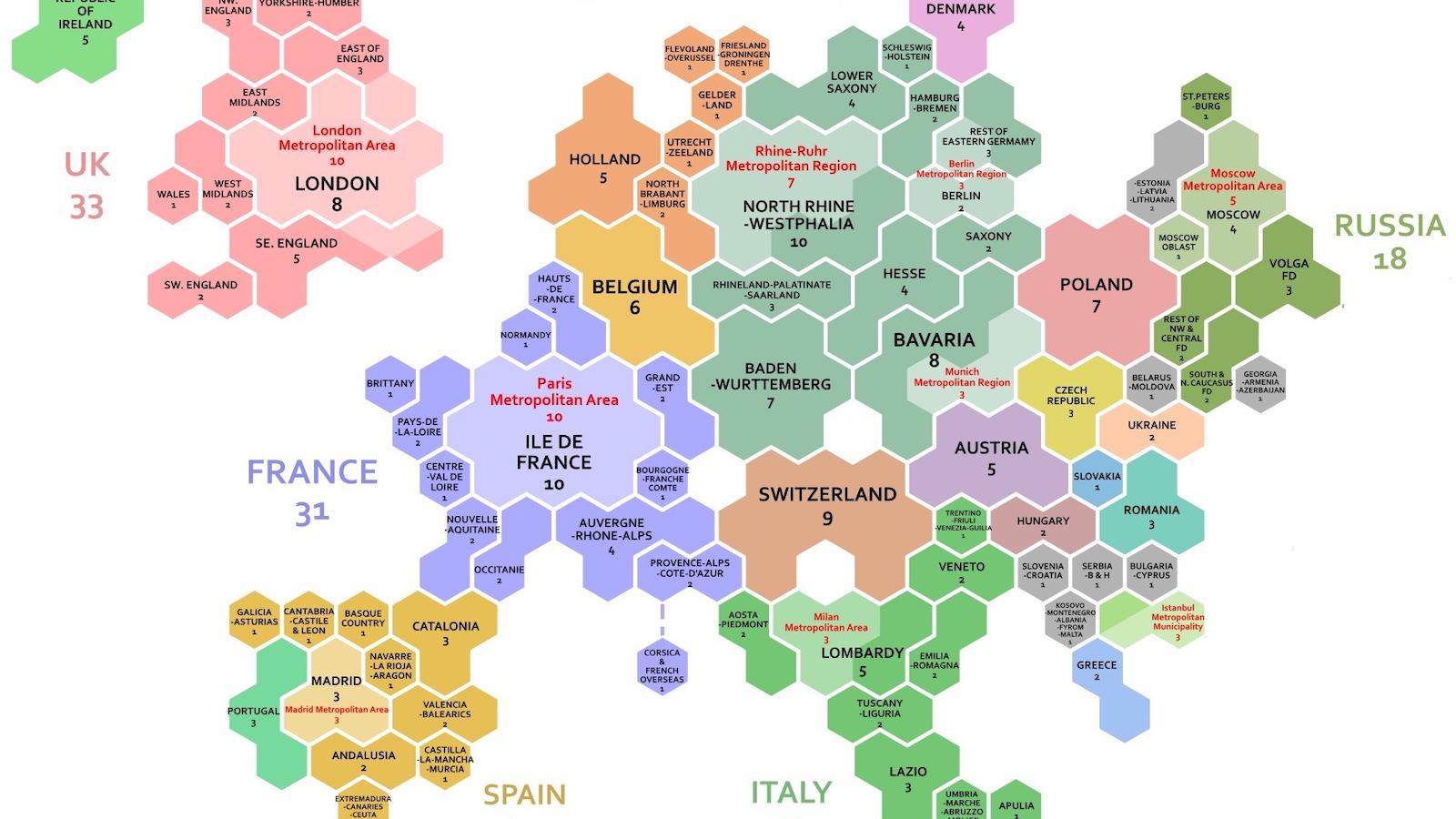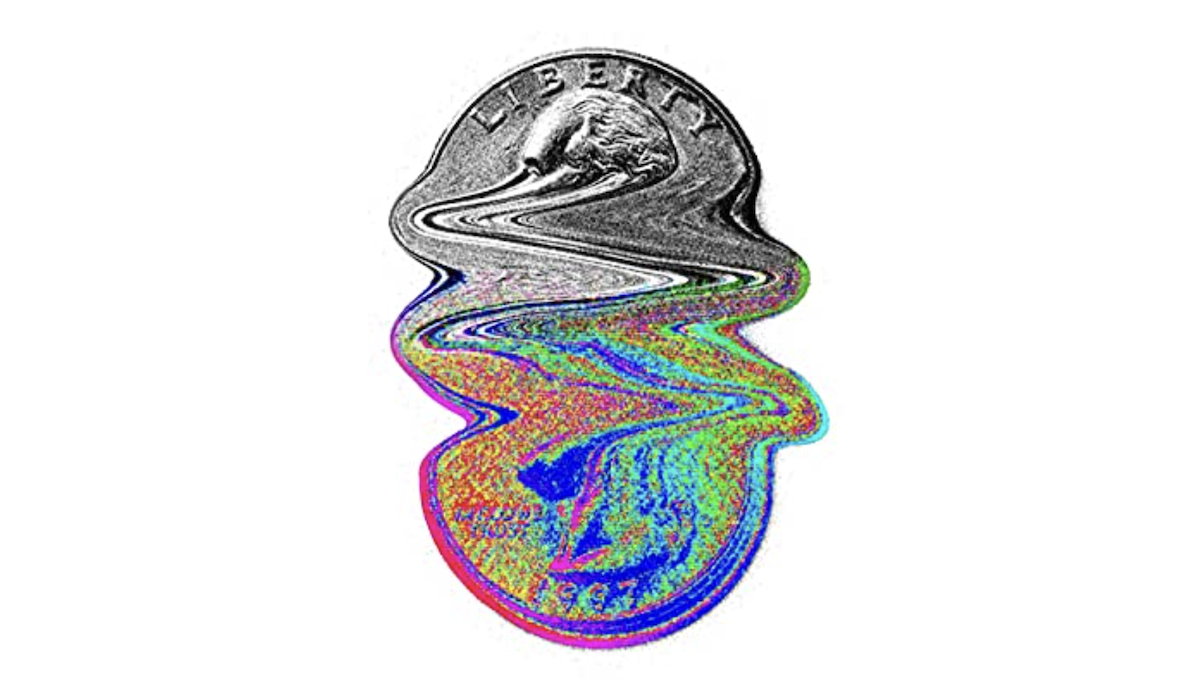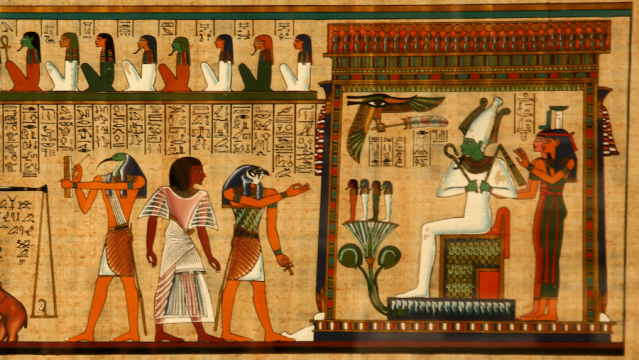Techno-optimism and the rule-of-threes: why the world will soon enter an era of mass flourishing

- Maturing technologies in the realms of information, machines, and materials are paving the way toward an explosion in human progress and productivity.
- In this excerpt from the book The Cloud Revolution, Mark Mills describes how “overnight success” stories like the iPhone are actually built upon previous technologies, which themselves often took decades to develop.
- Ultimately, technological revolutions of the kind we are now experiencing bring greater per capita wealth, improved health and well-being, and more conveniences and leisure.
The following is an excerpt adapted from the book The Cloud Revolution. It is reprinted with permission of the author.
We have evidence, hidden in plain sight, that the world is poised for another of history’s rare “mass flourishings,” to use the expression by Nobel economist Edmund Phelps. That evidence is not found in any single headline-grabbing invention, or the stock value of any single company, but is visible instead in the pattern of technological revolutions.
It’s the same pattern that ignited the great economic acceleration of the 20th century, which was not the consequence of any one invention. It was not just the car, the telephone, the radio, the electric light, or motor alone that so radically changed the world of that century. Instead, it was the incendiary effect of all of that happening simultaneously. And, critically, it was the contemporaneous maturation — not just the invention — of those technologies. And the fact that those advances occurred in each of the three foundational spheres of technology that make civilization possible: the means for gathering and propagating information, the means (machines) of production, and the class of materials available to do everything.
On the information front: the 20th century saw the arrival not only of the telephone and radio (and then television) for information dissemination, but also (and often ignored in popular accounts) the new information acquisition tools from spectroscopy and X-ray crystallography to precision clocks (of which the atomic clock and, derivatively, GPS) were at the pinnacle. Superior measurement and monitoring improved production capabilities as well as expanded our understanding of underlying phenomenon.
On the machine front: the early 20th century saw the advent of high-speed, highly controllable, electrically powered manufacturing machines yielding not only mass production but also far greater control. And, of course, there were the new machines of transportation (automobiles and aircraft) and of power production.
And on the materials front: The 20th century saw the advent of a profoundly different character and greater variety of materials available to make things, not least the arrival of chemistry (polymers and pharmaceuticals) and high-strength concrete. For eons, the majority of things in the built environment were made from a relatively small set of materials: mankind used only a fraction of the 92 (original) elements in the periodic table. The material suite used to make automobiles in early days included mainly wood, rubber, glass, iron, copper, vanadium, and zinc. Today a car is built using at least one-third of all the elements in the periodic table, and computers and communications gear employ over two-thirds of all the elements.
Marked from to 1920 — roughly when the maturation occurred, contemporaneously, for all of those different technologies — the next 80 years constituted history’s greatest overall expansion of wealth and wellbeing. The average lifespan of an American increased by 30 years and average per capita wealth rose 700 percent (in inflation-adjusted terms).
Yes, we know that the entirety of the 20th century wasn’t a time of wine and roses. Notably, the Roaring Twenties would end with the searing 1929 stock market crash, followed by a Great Depression and the tragedy of another “great” war. America survived the crises and chaos, but if it were not for that confluence of revolutions in technology’s three spheres, the great expansion leading to the modern life we now know would not have happened.
History’s rhymes: information, machines, materials
It has been said that history doesn’t repeat but rhymes. The rhyme, or pattern, that shaped the 20th century is again at play in the 21st. The evidence is visible in the same three spheres of technology — information, machines, materials — with, again, the same pattern of revolutionary technologies in each sphere contemporaneously reaching useful maturity.
This time, disrupting the information sphere, we find the microprocessor, a general-purpose information tool. Not only are the microprocessors morphing into a new class of software in the form of the inaptly named “artificial intelligence,” but they constitute the building blocks of datacenters, the massive “cathedrals of commerce” at the core of the sprawling Cloud infrastructure.
The AI-infused Cloud is not a communications system but an information infrastructure that uses communications networks. It is as different from the Internet as the Internet was different from the telephone network. And in the information domains, the Cloud’s capabilities are transforming and amplifying the means for observing and measuring — in digital terms, the means for harvesting data — and thus advancing the tools of basic discovery as much as did the invention of the microscope and telescope. The Cloud also transforms the means of measurement and detection at scales and at a granularity never before possible, in factories and on farms as well as the services used in daily life.
In the reboot of the second domain, the machines, we find the maturation of the 3D printer as a new means of production in how it can “magically” convert a computer image directly into a final product. 3D printing machines offer not only the capability to create mass craft production but also enable the capability to essentially “grow” components, mimicking nature in ways that are impossible using conventional machine tools, including fabricating artificial skin (or skin-like material) or even artificial organs.
The machine domain is also witness to a revolution in manufacturing tools derivative from the microprocessor supply chain, ones that can fabricate at molecular scale. Half a century ago, such an idea was only in the imagination of science fiction writers like Isaac Asimov. And, despite decades of hype and hope, 21st century machines now include not only autonomous drones but also a path to untethered and anthropomorphic robots that can collaborate with humans in many tasks.
And the third in the triad of technology’s spheres is the nature of materials available to build everything. Here, just as happened in the early 20th century, we are witness to a materials revolution, but this time it includes computationally designed and synthesized materials that can exhibit “unnatural” properties, such as invisibility. Humanity is on the cusp of realizing the long dream of alchemists in literally conjuring materials.
Instead of relying on a fixed catalogue of available materials or undergoing trial-and-error attempts to come up with new ones, engineers can turn to algorithms running in supercomputers to design unique materials, based on a “materials genome,” with properties tailored to specific needs. Among the new classes of emerging materials are “transient” electronics and bioelectronics that portend applications and industries comparable to the scale that followed the advent of silicon-based electronics.
In each of the three technological spheres, we find the Cloud increasingly woven into the fabric of innovation. The Cloud itself is, synergistically, evolving and expanding from the advances in new materials and machines, creating a virtuous circle of self-amplifying progress. It is a unique feature of our emerging century that constitutes a catalyst for innovation and productivity, the likes of which the world has never seen.
Innovative disruption and the rule of threes
There is also a rule of threes visible in the pattern of the innovations within each of the spheres of technology.
Inventions are built on layers and combinations of other more foundational innovations that can be traced, in a kind of Russian nesting doll structure, back to earlier inventions, insights, and discoveries. But history shows that when an iconic innovation arrives — the ones that are seen as pivots in history or “disruptive” — they are made possible by the combination (in a unique or uniquely clever way) of typically three other enabling inventions that are usually from independent domains, each having reached a level of useful maturity.
The railroads, the grandaddy of disruptive technologies, were made possible by the maturation of three innovations, none of which the Rail Barons invented: the steam engine, high-strength steel, and the telegraph, the latter essential for coordinating operations (on a single tack) to manage the historically unprecedented velocities.
Consider as a case study the epoch-setting unveiling, in 2007, of the iPhone. It could not have been built were it not for the maturation of three, independently revolutionary technologies, none of which Apple or Steve Jobs had anything to do with: the integrated circuit (yielding both the microprocessor and chip-sized radio), a pocket-sized TV screen, and the lithium-ion battery.
Take any one of those three key technologies away, and we have no iPhone. But it takes nothing away from Jobs or Apple that they were the first to successfully employ that technological trifecta, employing revolutionary tools invented by others with origins that began elsewhere, decades earlier.
The large-scale integrated circuit was invented in 1959 by Jack Kilby (for which he would receive the Nobel Prize), then at Texas Instruments. That technology lead directly to the microprocessors and radios inside every smartphone.
It was in 1964 that George Heilmeier, at RCA, invented the liquid crystal display (LCD) for which he was eventually inducted into the National Inventors Hall of Fame. The LCD could use low voltages (TV tubes use extremely high voltages) to control light passing through or reflected from thin layers of electrically sensitive liquid crystals. A decade later, Shinji Kato and Takaaki Miyazaki at Sharp Corporation in Japan would add color to the technology.
The arrival in the 1990s of a lithium-ion battery provided game-changing electricity storage capability, without which the useful portability of a smartphone could not have happened. Stanley Whittingham shared in the 2019 Nobel Prize for originating that chemical invention in the 1970s.
We can see the rule of threes repeated over history: Luis Daguerre, inventor of the “Daguerreotype,” an early form of photography, employed high quality lenses, chemicals (which could record and fix images), and the idea of image capture revealed centuries earlier with camera obscura.
Samuel F.B. Morse, father of the telegraph, gave us the “Victorian Internet” (about which there is a compelling book so-titled by Tom Standage). It was built on the three enabling technologies of the electromagnet, the battery, and cable-making.
Guglielmo Marconi, whose name was a synonym for radio for decades, was able to build the first “wireless” from the technologies of the telegraph, power plant, and radio frequency vacuum tube, all of which were invented years earlier.
Willis Carrier produced the first useful air conditioner, the single product most credited with the rise of America’s South, also based on three enabling technologies: the centrifugal compressor (which, it happens, he invented), the electric motor, and the distribution of cheap electricity.
Henry Ford could not have built his great enterprise but for the confluence of the gasoline engine, petroleum refining, and the idea of an assembly line. The last of these found its origins with Frederick Taylor, who had earlier transformed steel-making at the Bethlehem Iron Works circa 1899.
RCA’s founder David Sarnoff launched the era of television in 1941 using the confluence of the cathode ray tube, the radio, and the idea of a scanning technique to collect and transmit images.
IBM’s Thomas Watson brought the world the practical modern computer using the triad of the silicon transistor, magnetic tape, and the concept of computer logic — that is, software.
And Vinton Cerf, credited with inventing the Internet, built on the (independent) confluence of pervasive computing, pervasive telecommunications, and the concept of coded packet routing of information, all invented earlier by others.
At a higher level of abstraction, we can see that Amazon was made possible by the confluence of three classes of technologies Jeff Bezos did not invent: the Internet, the smartphone, and the datacenter. The same pattern enabled the great retail empire built by Richard Sears and Alvah Roebuck who, in 1893, created the catalogue-centric shopping empire that launched an entirely new means of commerce that would come to sell and distribute nearly every imaginable product from clothes and books to prefab homes. Sears and Roebuck capitalized on three revolutions: railroads that enabled low-cost distribution of goods; centralized cost-effective manufacturing that provide low-cost (instead of craft-made) products; and the then-new mass production of pulp paper enabling massive volumes of catalogs to be produced and distributed at low cost.
Today, the explosive increase in the use of warehouses, at the core of today’s e-commerce infrastructure, has become the locus of a revolution in robotics. The “overnight” acceleration in warehouse robotics is, similarly, not the consequence of some specific invention. Practical, untethered, and even ambulatory robots required unrelated revolutions in software, sensors, and power. The magic of AI-centric navigation software now combines with profoundly superior sensors for vision and location, lithium batteries to store onboard power, and high-precision, high-power actuators (the “muscles”).
“Overnight successes” take about 60 years
The pace with which new innovations enter markets also follows a rule of threes: the three phases from invention to commercial viability to market significance.
Once “disruptive innovations” start to disrupt a market, it invariably seems in hindsight like the proverbial overnight success. But the typical dynamic over modern history is consistently a pattern of, often, twenty years for each phase of growth.
It was 20 years after the 1886 invention of the automobile before a practical design emerged, the Model T (1908). Then nearly 20 more years passed until the automobile inflection, when the U.S. went from about 5% penetration (car-to-population ratio) in the early 1920s to 20% by the end of that decade. Ubiquity would arrive another 20 years later.
Consider the rapid rise in radio technology in the 1920s, which came two decades after Marconi’s invention, and the latter coming over two decades after Heinrich Hertz proved that there were radio waves.
As for the oft-claimed “accelerating pace” of innovation in our times, consider that the first PC didn’t come on the scene until about two decades after the first commercial computer, the 1951 Univac. And the latter arrived almost two decades after the first electronic computer was built in 1937. (For the cognoscenti: it was a machine built by Professors Atanasoff and Berry at Iowa State College, not the famous ENIAC of 1944.)
It would be two decades after the first portable “radio phones” (the iconic 35-pound backpack “phone” of WWII) before Bell Labs conceived of the idea of a “cellular” radio network, and then almost another two decades before Motorola would begin the design of a cell phone. Then it took almost two more decades to see market penetration reach 25%.
The pattern repeats: while autonomous drones were imagined in World War II (and used to some extent, for target practice), the first viable designs for a general purpose drone originates circa 1970s, and it would be over two decades before the arrival of a viable product, and another two decades before the inflection, with drones rapidly entering wide arrays of commercial applications circa 2010.
3D printing finds its origins in 1984 with the invention of stereolithography (credited to Chuck Hall but, like drones, an idea dating back to WWII). It was then two decades before viable machines entered industrial and commercial markets, and another two decades (our era) before 3D printers achieved roughly a 10% share of the machine tool market.
Similarly, it was about 20 years after the development of the lithium battery before the first useful electric cars (famously, Tesla). And we are on track for it to be 20 years since then before breaching the point where five percent of all cars are propelled by a battery.
Of course, timelines are sometimes a little faster. It was less than a decade after the idea of “packet switching” to the creation of the Internet. And even though it took two decades before public commercialization of the World Wide Web, it only took another decade to see significant market penetration.
And timelines can be far slower too, even if the basic patterns remain. While getting to the moon seemed to happen quickly, the “within this decade” goal set famously by President John F. Kennedy came almost 20 years after the first rocket reached outer space. But it has taken 50 years since to see launch costs come down enough to enable broader commercial uses of space. And any significant passenger uses of space are still in the far-off future.
Andy Grove, Intel’s storied second CEO, in his retirement preached passionately about the importance of understanding just how hard it is to engineer, build, and scale-up real-world companies. He wrote about the “hidden” challenges of the three phases, not only for products but also for companies. It was about two decades after the idea of silicon transistors before Intel was founded, and another two decades before it became a company of significant scale in an industry of consequence.
It was, similarly, about 20 years after the birth of the Internet before Amazon would go public. Another twenty years passed before it became obvious that e-commerce was reaching an inflection point, breaching 5 percent of all retail sales.
That we should now expect more disruptions — equivalent to the advent of e-commerce, or companies like Amazon, but in all the other markets of an economy — is made clear by the variety of innovations in each of the three spheres of technology, and because so many are approaching maturation contemporaneously.
Mass flourishing
Of course, given the patterns of human nature, it would be naïve to think the 21st century’s great lurch forward will be free of turmoil, political strife, and even (sadly) more wars. But, as with that same pattern circa 1920s, such deep technological transformations ultimately show up in the three key metrics that matter to society: greater per capita wealth, improved health and well-being, and more conveniences as well as more time to enjoy them in the forms of entertainment and leisure.





